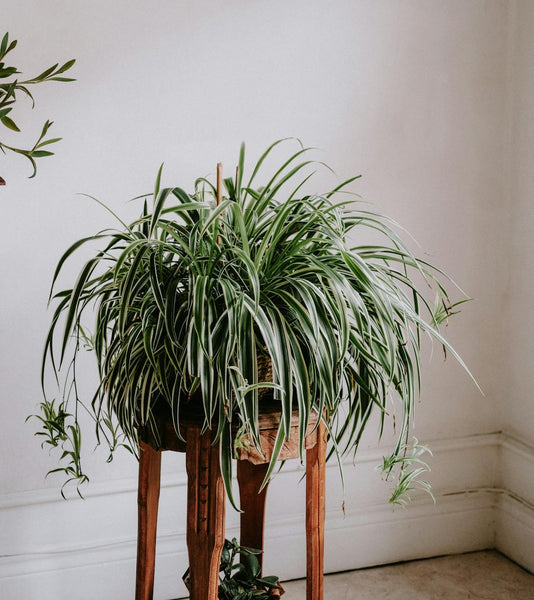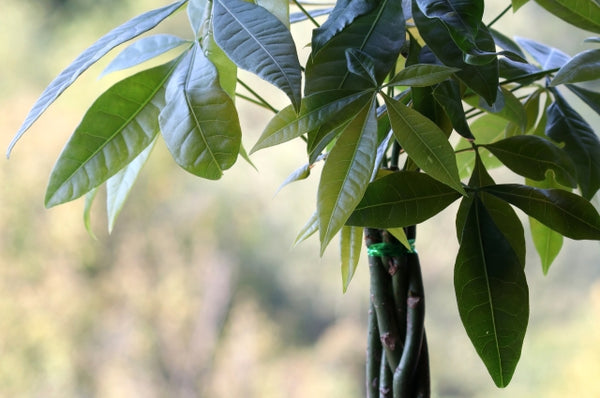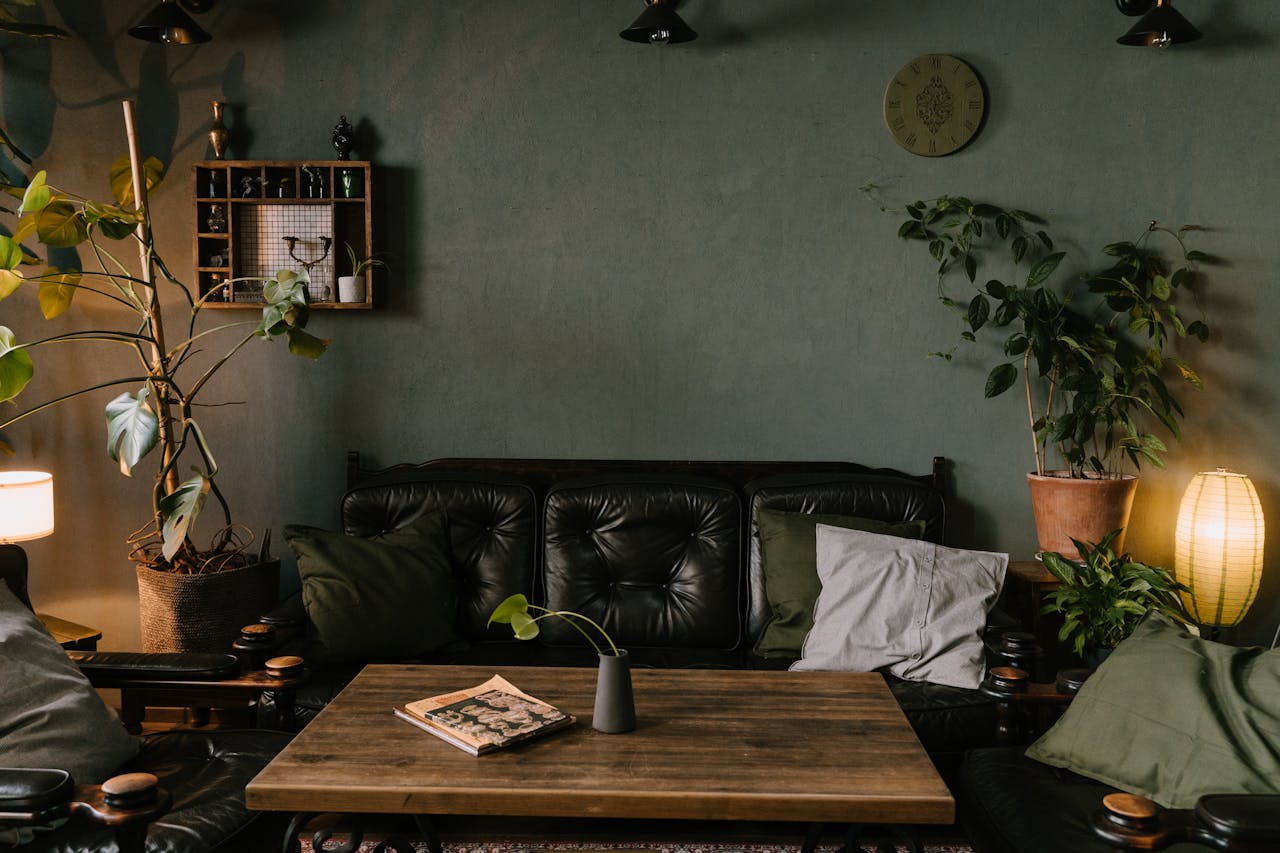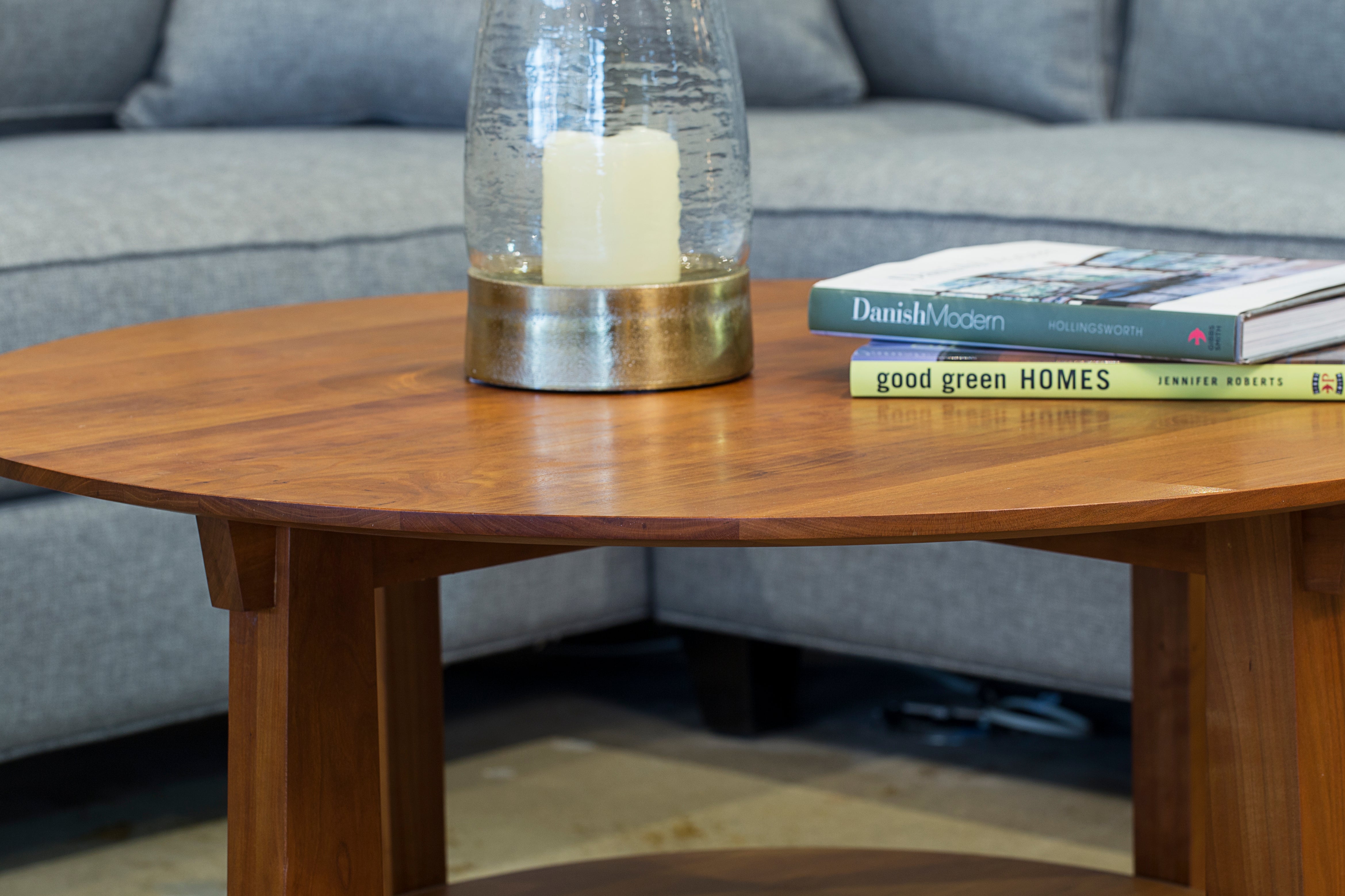Planning for a space that brings nature indoors while keeping your beloved cats can be quite a challenge. As you know, some plants are toxic to cats, especially when consumed. Of course, you wouldn't want anything that may harm your furry friends.
The good news is that there are plenty of cat-friendly plants that you can safely grow indoors. Let's explore a few of these cat-safe species so you can start growing your indoor garden.
Ponytail Palm
Beaucarnea recurvata
If you’re looking for a unique houseplant that also grows tall, the Ponytail Palm is a good option. Even better, it’s safe for your furry friend. All parts of the plant - leaves, stem, and bulbous trunk - are non-toxic to cats and dogs.
Ponytail palms, in their natural environment, can grow as much as 30 feet tall, but in gardens, they usually stay under 10 feet. Indoors, they typically stay around 4 feet tall, which is just about enough for an indoor, mini tree.
Caring for Ponytail Palms
Sunshine - Ponytail Palms love bright, indirect light. Think sunny mornings but shade from the harsh afternoon sun. South or west-facing windows are ideal.
Watering - This is key! Overwatering is the enemy. These guys store water in their bulbous base, so underwatering is tolerated better. Water only when the soil is completely dry to the touch. Soak it thoroughly and let the excess drain out. Depending on light and temperature, this could be every 1 to 2 weeks.
Soil - Fast-draining is the way to go. Use a cactus or succulent potting mix, or create your own by mixing regular potting mix with perlite and sand for extra drainage.
Spider Plant
Chlorophytum comosum
The Spider Plant is known as one of the most adaptable houseplants, which is good news to novice plant parents out there. Of course, it's also considered non-toxic to cats, which means you don't have to worry about your feline friend getting seriously ill if they take a nibble.
Take note, though, some cats find spider plants mildly attractive, similar to catnip. While ingesting a small amount won't cause harm, large quantities might lead to vomiting or diarrhea.

Caring for Spider Plants
Sunshine - Spider Plants thrive in bright, indirect sunlight but can tolerate lower light conditions.
Watering - Aim for watering once a week, or when the top inch of soil feels dry to the touch. Overwatering can damage the roots.
Soil - Use a good quality, well-draining mix. During spring and summer, a diluted fertilizer solution once a month will keep them happy.
Chinese Money Plant
Pilea peperomioides
The Chinese Money Plant, also known as the UFO Plant, features shiny leaves resembling stacked coins that elegantly grow from a single stem. This is probably why it's considered a symbol of good fortune.
What's great about this plant is that it's fairly easy to grow. With minimal attention, your Chinese Money Plant will reward you with lush, green, and pet-friendly foliage.

Caring for Chinese Money Plant
Sunshine - Bright, indirect sunlight is ideal. This provides enough light for healthy growth without scorching the leaves. Although the Chinese Money Plant can tolerate lower light conditions, its growth might be slower. Plus, it may become leggy as it grows stretching towards the light source.
Watering - Water thoroughly when the top inch of soil feels dry to the touch. Depending on light, temperature, and pot size, this could be once a week or slightly less. Overwatering is a major threat, so waiting for the soil to dry helps prevent root rot.
Soil - Use a well-draining potting mix specifically formulated for indoor plants. Consider placing a layer of pebbles at the bottom of the pot before adding soil to further aid with drainage.
Money Tree Plant
Pachira aquatic
Also known as Guiana chestnut, the Money Tree Plant is another cat-safe plant you can grow indoors. It's a pretty one, too, adding a touch of tropical with its braided trunk and lush green leaves.
The houseplant is a relatively low-maintenance houseplant. But with its tree-like appearance, some people may be tempted to bring it outdoors. Avoid doing this, especially in colder climates as it may not survive winter or even early fall temperatures.

Caring for Money Tree Plants
Sunshine - Bright, indirect sunlight is ideal. This allows them to thrive without the risk of sunburned leaves. It can handle low light conditions, but growth might be slower.
Watering - Water deeply only when the top 2-4 inches of soil feel dry to the touch, which can be every one to two weeks.
Soil - Use a well-draining potting mix specifically designed for indoor plants. It's important to prevent water from pooling around the roots and causing rot.
Polka Dot Plant
Hypoestes phyllostachya
The Polka Dot Plant adds a touch of color to your cat-friendly home. Known for its eye-catching foliage, its green leaves are often splashed with pink, red, white, or a combination of these colors, creating a playful polka dot effect.
While the Polka Dot plant is non-toxic to cats, they may experience mild digestive issues if they chow down too much of it. It's one thing to consider, but generally, this pretty plant is safe and pretty much low maintenance.
Caring for Polka Dot Plants
Sunshine - Polka Dot Plants thrive in spaces with bright light, but not the harsh rays of direct sunlight, which can scorch the leaves. East or north-facing windows are ideal.
Watering - These plants prefer partly moist soil, but it should not be overly saturated. Allow the soil to slightly dry out between waterings but avoid drought conditions.
Soil - Use a well-draining potting mix specifically formulated for indoor plants. This allows excess water to escape and prevents root problems.
Calathea Peacock
Calathea makoyana
The Calathea Peacock is a stunner with large, oval-shaped leaves. The leaves boast beautiful patterns - wavy stripes of light and dark green, resembling a peacock's plumage, hence the name.
Calatheas are considered safe for cats, but as they are tropical plants, they may be difficult to cultivate indoors for inexperienced gardeners. It may require some trial and error to find the ideal conditions for indoor growth.
Caring for a Calathea Peacock
Sunshine - Bright, indirect light is essential. Direct sunlight can scorch the leaves.
Watering - Water deeply when the top inch of soil feels dry to the touch. Depending on light and temperature, this could be every 1-2 weeks. Keep the soil consistently moist, but not soggy.
Soil - Choose soil that is well-draining yet retains moisture, like a potting mix formulated for indoor plants containing peat moss, perlite, and orchid bark.
Baby Rubber Plant
Peperomia obtusifolia
The Baby Rubber Plant has shiny, deep green leaves that grow on upright stems, giving it a bushy appearance. Despite its name, it is not related to the rubber tree.
While this pretty houseplant is generally safe for pets, it's important to note that it closely resembles the toxic Rubber Tree (or Ficus benjamina), which can be harmful to cats and dogs.
Caring for the Baby Rubber Plant
Sunshine - Baby Rubber plants thrive in natural sunlight, bright but indirect. It provides enough light for healthy growth without the risk of leaves burning
Watering - Let the soil dry out almost completely between waterings. The top inch or so of soil should be dry to the touch.
Soil - Use a well-draining potting mix specifically designed for indoor plants. This prevents water from accumulating around the roots and causing rot.
Staghorn Fern
The Staghorn Fern can be a unique addition to your indoor greenery.
The common staghorn fern (Platycerium bifurcatum) is gaining popularity as a houseplant due to its unique sculptural look. It features round, shield-like fronds that hug its support, and strap-shaped, forked fertile fronds that resemble antlers.
It is important to note that it is an epiphytic plant, meaning it grows on other plants or objects for support without being parasitic. But it does mean you have to mount it, which can take some work.
Caring for Staghorn Ferns
Sunshine - Staghorn Ferns thrive in bright, indirect sunlight
Watering - To water, take it down from the wall and soak it in a bucket of water, including its roots and the shield-like fronds, for 10-20 minutes once a week. Make sure it dries completely before hanging it up again.
Soil - Staghorn ferns are epiphytes and don't need traditional soil. They can be mounted on materials like corkboard or coconut husk fiber for proper drainage. If not mounted, they can also be grown in a well-draining, chunky orchid mix placed in a basket.
Takeaway and Reminders
Cats are curious creatures and often enjoy nibbling on plants. As a responsible pet owner, it's important to ensure that the plants in your home are non-toxic to cats. By choosing cat-friendly plants, you can create a safe and welcoming environment for your pets.
However, even though you have non-toxic plants, there are still a few things to keep in mind if you have houseplants:
- While ingesting a small amount of non-toxic houseplants won't cause harm, large quantities might still lead to vomiting or diarrhea.
- Some cats find certain houseplant species mildly attractive, similar to catnip. This can tempt them to chew on the leaves.
To keep your cat and indoor plants happy, here are some tips:
- Keep some houseplants out of reach. If you've observed that your cat likes to chew on certain plants, consider placing them on a high shelf or in a hanging basket.
- Provide alternatives, too. Offer your cat catnip toys or scratching posts to redirect their chewing instincts.



Leave a comment
This site is protected by hCaptcha and the hCaptcha Privacy Policy and Terms of Service apply.